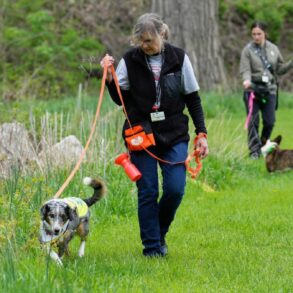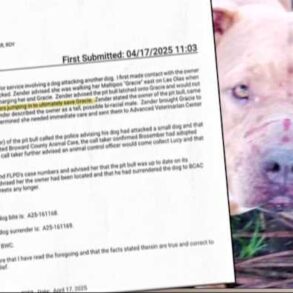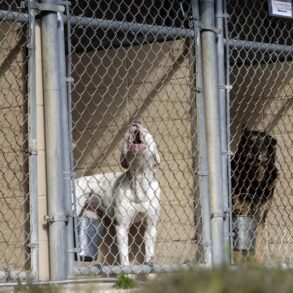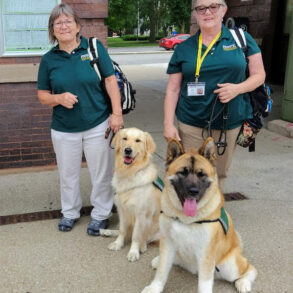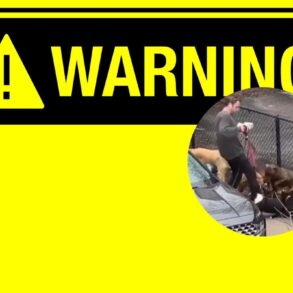The spotted lanternfly, a leaf-hopping invasive pest first detected in the US a decade ago, has steadily spread across the East coast and into the midwest with little getting in its way.
But now researchers are deploying a new weapon to slow its advance: specially trained dogs with the ability to sniff out the winged insect’s eggs before they hatch.
Harmless to humans, spotted lanternflies can damage trees and fruit crops, and feed on the sap of over 70 different species of host plants.
Since late last year, four of the dogs have been scouring parks in the Cleveland area in search of egg masses hidden around trees, shrubs, park benches, landscape rocks and bridge pillars. Each egg mass can produce 30 to 50 spotted lanternflies.
So far, the dogs have uncovered more than 4,000 of the masses, meaning they’ve helped eradicate as many as 200,000 of the sap-sucking bugs that damage grapes, fruit trees, hops and hardwoods, said Connie Hausman, senior conservation science manager at Cleveland Metroparks.
In just a few hours in April, the dogs found about 1,100 egg masses at the Cleveland Metroparks Zoo, Hausman said.
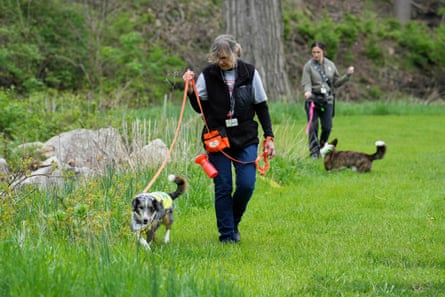
However, not just any dog can go out searching, she said.
“They all have wonderful noses, but they’re not all eligible,” she said. “They had to pass tests to prove their service.”
The dogs were trained through a research project led by a group at Virginia Tech University, which is setting out to slow the spread of the insects that are native to eastern Asia and recognizable for their distinctive black spots and bright red wing markings. A grant from the US Department of Agriculture facilitated the project, unofficially called the Canine Citizen Science Study. Professors at Virginia Tech partnered with researchers at Texas Tech University to call on dog owners to put their pets to work.
The four dogs working in Cleveland owned by local residents already had scent training before they worked with Virginia Tech to hone their noses to detect the spotted lanternflies.
Once they spot a new mass of eggs, the dogs get a treat from their handlers who scrape away the mud-like masses.
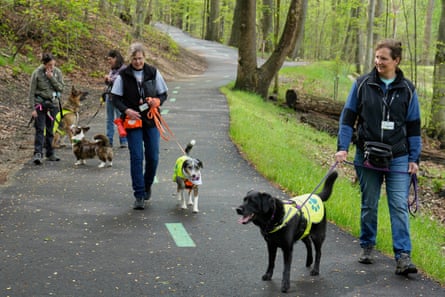



Female spotted lanternflies typically start to lay their eggs in late August through November, or until the first frost. While the adults freeze to death in the winter, their egg masses can survive. Spotted lanternflies can lay their eggs on a variety of surfaces, including tree trunks, telephone poles, rocks and the undercarriage of vehicles.
Flint, a border collie, was trained to sniff out the offending bugs by owner and trainer Sally Dickinson, who attends Virginia Tech.
Dickinson took Flint out to Virginia Tech’s agricultural center to test out his sniffing skills. As Flint showed off his impressive olfactory capabilities, Dickinson encouraged dog owners to train their dogs to help eradicate the pests, no matter the breed.
“There is plenty of research out there that indicates that all dogs can smell,” she said. “Maybe the ‘smooshy’-nosed dogs aren’t as good in the really hot weather to work for five hours straight, but they can definitely do it.”
Virginia Tech News contributed reporting
This post was originally published on this site be sure to check out more of their content.












